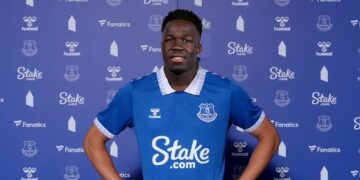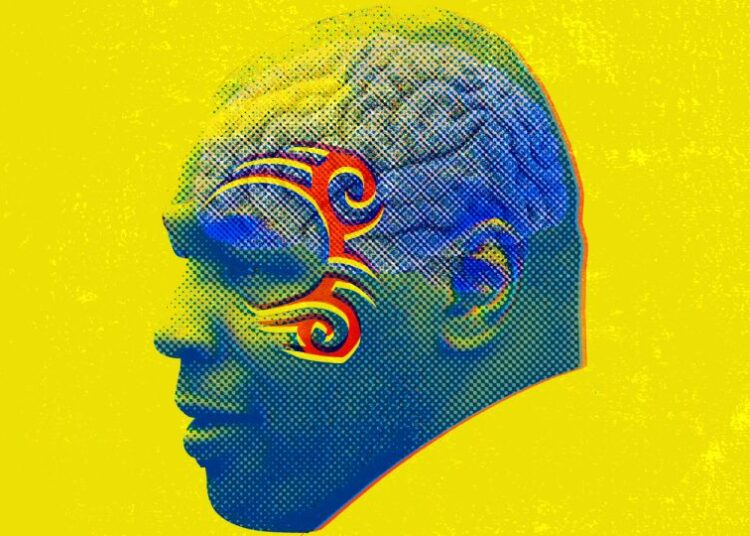Mike Tyson steps into the ring. His youthful appearance belies the power he possesses.
It is 1985 and the heavyweight is about to make his professional boxing debut. One minute and 47 seconds later and an 18-year-old Tyson has already forced his opponent, Hector Mercedes, to withdraw after a series of devasting blows to his body and head.
It was the beginning of a formidable career in the ring for Tyson, filled with the highest of highs and the lowest of lows. Now, 39 years later, “Iron Mike” will step back into the ring aged 58.
On Friday, Tyson will don his gloves once again for a professional bout against 27-year-old YouTuber Jake Paul at AT&T Stadium, the home of the Dallas Cowboys, more than 7,000 days since his last professional outing.
His last professional fight came in a loss to Kevin McBride more than 19 years ago, and his last exhibition fight was four years ago when, coincidentally, Paul was fighting in just his second professional fight on the undercard of that very event.
The pair were initially scheduled to fight in July this year, though the bout was postponed when Tyson experienced an ulcer flare up.
Competing at the highest level presents challenges as athletes age, with physical and mental fitness tougher to regain. But in a sport like boxing, it also provides challenges neurologically.
Given his whole professional life has been predicated on being hit in the head, Tyson could be at a higher risk of neurological damage when he steps back into the ring, according to Dr. Nitin K Sethi – clinical associate professor of neurology at Weill Cornell Medical College.
In particular, boxing commissions often categorize fighters as being at a “high risk” of sustaining further injuries if they are fighting over the age of 40.
“When you talk about fighters who are now above the age of 40, you worry about two things,” Sethi, who also works as a ringside physician, told CNN. “One, I worry about the fighting in the ring itself, because is that fighter more predisposed to getting a severe traumatic brain injury under my watch while in the ring because of his or her age?
“The second thing I worry about is, this is a fighter who was had many, many years of professional boxing under his or her belt. You worry about the chronic neurological injuries.”
CNN has contacted Tyson to offer him the chance to comment on any potential health concerns he may have ahead of the fight against Paul.
Damage
As Sethi explains, boxing is “unique.” The concept of a sport in which the objective is to punch the opponent – primarily in the head – and cause a knockout means boxing comes with very specific health concerns.
Sethi, in his role as a ringside physician where he is accustomed to evaluating the fitness of the fighters in the ring, sees firsthand the regularity with which concussions occur in boxing. He says that if he steps in and stops a fight every time he sees a boxer show concussion-like-symptoms, “there’ll be no boxing at all.”
But the true danger of the sport doesn’t solely come from the big, explosive knockouts which get fans on their feet. Long-term repercussions can originate from the repeated blows to the head boxers sustain throughout a fight and during the training process.
“When you have somebody whose profession is receiving numerous head impact exposures – both during training, sparring, and when in the ring – these head injuries and head impact exposures add up,” Sethi said. “That’s why when you talk about chronic neurological injuries in boxing, I personally feel that that’s the bigger problem.”
However, unlike the knockouts and obvious concussive signs, the cumulative effect of these long-term blows only appears after the “bright lights are not shining on them, so nobody cares,” Sethi explained.
Boxers can develop symptoms or conditions such as an inability to sleep, chronic dizziness, chronic post concussive symptoms, chronic Parkinsonian signs, and chronic traumatic encephalopathy (CTE) long after they retire.
But Sethi believes equal attention should be paid to the impact repeated blows to the head can have on a boxer’s brain during their career, and learning how to protect them from long-term neurological issues.
And being susceptible to neurological complications only increases with age.
For example, the New York State Athletic Commission’s medical standards manual lists numerous factors which can categorize boxers as “high-risk combatants” such as if they are over the age of 40 and have had over a year of inactivity after the start of their professional career, amongst others.
Plenty of boxers have continued to fight past the age of 40, with legends such as Sugar Ray Robinson, George Foreman, Evander Holyfield and Larry Holmes all fighting beyond that point.
“The reason 40 is used as a cutoff is because there’s concern raised that when you have older fighters entering the ring or cage, they are more susceptible to either getting hurt or, for example, an older brain handles a concussion less (well) than, for example, a younger brain,” Sethi explains.
“You can look at it both ways. One is what is the propensity that they will get hurt. And then it’s even if they suffer the injury, is it the fact that age itself is detrimental in the healing process?”
Tyson falls into both of those categories, as he’ll be fighting at the age of 58 and has not fought professionally since 2005.
According to the Texas Department of Licensing and Regulation (TDLR) – the commission that has sanctioned the professional fight – boxers over the age of 36 must submit recent electroencephalogram or electrocardiogram test results – measuring brain and heart activity – in the lead up to a fight.
The TDLR told CNN that the test results “must be favorable in order for (fighters) to be approved to compete.”
The TDLR told CNN that it had approved a professional bout between Tyson and Paul with certain waivers, meaning the fight will last for eight rounds, with two minutes for each round and both boxers wearing 14-ounce gloves.
Change for the better
Brain injuries in boxing are not a recent phenomenon.
Even as far back as 1928, they were being studied in the sport when American scientist Harrison Martland described boxers as being “punch drunk” when showing concussive symptoms, while other terms to describe a fighter’s neurological state after a big contest include dementia pugilistica and slug nutty.
Besides additional neurological testing carried out on fighters during their career, Sethi believes there is still a lot more that can be done to protect fighters and prevent long-term neurological damage.
“A lot of change in boxing has to come from the boxers themselves, their families, the retired boxers, they have to say: ‘Make the sport safer for us,’” he said. “The culture of boxing is such that nobody ever says: ‘No mas (no more).’
“No boxer will ever say: ‘I’ve had enough. I’m quitting.’ And I always say: ‘It’s no harm in saying no mas.’ There’s going to be days when you step into ring and it’s not your day and you decide: ‘Ok, fine. I don’t think I can go on with this boxing.’”
For all of its obvious health risks, boxing has faced opposition, and some medical associations – including the World Medical Association – around the world have taken it upon themselves to call for boxing to be banned altogether.
But despite those calls, it remains one of the most popular sports in the world, for obvious reasons. The explosive nature of the sport, the storylines and the colorful personalities make it must-watch TV at times.
Tyson has brought all of that to boxing over his lengthy and often controversial career, but when he steps into the ring on Friday, the neurological impact he could feel might outweigh the positives.
For more CNN news and newsletters create an account at CNN.com
Read the full article here


























